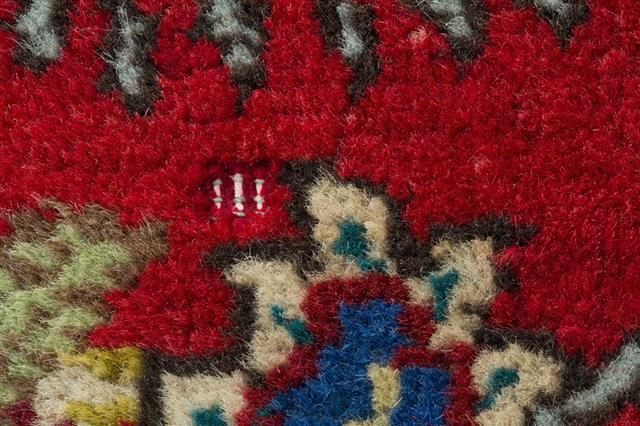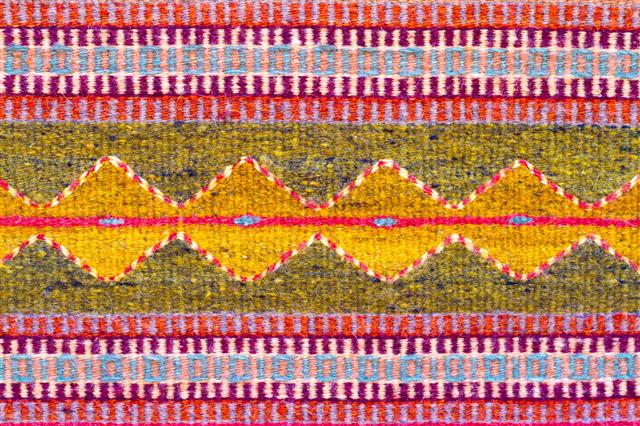
Is it easy to dye a carpet or a rug? What are the methods involved? Learn everything about it through the following article.
Dyeing is basically turning a textile product like yarn, fiber and fabric into colors of your choice. It is done using special dye solutions consisting of dyes and chemical solutions. It is done to add color to the fabric and ultimately increasing the product value of the fabric. There are commercial dyeing houses that work on commission basis. Dyeing at home is also possible by following the correct technique. Earlier dyes were extracted from natural sources like plants and animals but, recently, man-made artificial dyes are used in order to maintain the stability of colors even after washing and regular use. Let’s get acquainted with the methods of dyeing rugs and carpets in the following part of the article.
Methods of Dyeing a Carpet and Rug
Though we are dealing with methods of dyeing a carpet, the same methods are applicable for rug dyeing as well. The only thing to be kept in mind while dyeing is, the type of fabric out of which the rug or the carpet is made. The dyeing method is broadly divided into two types, which are pre-dyeing and post-dyeing and they are further divided into a few sub types.
| Professional Dyeing Methods |
Pre-Dyeing
As the name suggests, it is the method of dyeing the fibers before they are tufted into a carpet. There are sub-types of pre-dyeing which are:
Solution Dyeing
This is the most common method of dyeing used all over the world. It is also called spun dyeing or dope dyeing. In simple terms, the fibers or threads are dyed, which spreads the dye throughout the fabric. A colored pigment is mixed with the polymer from where the yarn fibers are weaved into each other. This causes the color to become an inherent part of the fibers and does not remain only at the surface as what can occur in post-dyeing. The color permanently sticks to the fibers and is not affected by washing the fabric or exposing it to sunlight. The only drawback of solution dyeing is that dyeing colors available are very limited.
Stock Dyeing
Here the yarn is dipped into a bath of the dye. A vat (large vessel to store liquids) is used in this process. The yarn is placed into the vat containing dye and heated with extreme pressure. The pressure forces the dye into the fibers, coloring them. The yarn is then spun to remove excess water and heated to dry the color. This method is commonly used for dyeing wool, acrylic, polyester and nylon fabric. These dyed yarns are more susceptible to fading, bleeding of color and staining however, it largely depends on the type of fiber and dye.
Post-Dyeing
It is done after the yarn is turned into a carpet. Post-dyeing is divided into the following sub-types:
Continuous Dyeing
Spray jets are used to apply the dye on the carpet evenly in a continuous process, moving forward and backward through the dye range. The carpet is then steamed to allow the dye to set onto the fibers. A single applying device is used to color the carpet into a solid color whereas multiple applicators are used to have different colored effects. This technique helps reduce the cost of the carpet and hence most residential carpeting is produced using this technique.
Beck Dyeing
This type of dyeing is a costly method used specifically for heavy yarn fibers. Long rolls of carpet are placed in a stainless steel tank containing dye and the temperature of the dye is increased in order to allow the fibers to absorb the color. Usually single solid color dyeing is done in this method but, having alternate stripes of colors is also possible.
Print Dyeing
This method is very much similar to continuous dyeing. The only thing is, print dyeing offers you a great scope of color patterns on the carpet. It is done on the surface level of the carpet and does not penetrate the back side. It may show a reflection on the reverse side in case of thin fabrics. Printing is done in different ways like screen printing, direct printing, discharge printing, roller printing, block printing, resist printing, etc.
| Home Dyeing Method |
You can even dye rugs at home just by following some steps. Remember, you are not a professional dyer, so extra care should be taken while doing the task. The things that you need for dyeing are:
- A vat or a regular bathtub
- Dye (color)
- Hot water
The steps for dyeing a rug are as follows:
- Fill the bathtub or vat up to 2½ quarters full with hot water.
- Add the dye. If you are using two colors, add the second color.
- Stir the water with a spatula gently for about 20-30 seconds. This will prevent streaks on your colored rugs.
- Dip the rug into the dyed water with all its edges completely inside. Use the spatula to push the rug’s edges inside so that you won’t get stains on your hand.
- Let the rug soak in the water till the desired color is achieved. Keep stirring the water to avoid the dye settling in one place.
- Remove the rug and rinse it in cold water.
- Spin it to remove excess water and put it in a drying rack or spread towels on the floor and place the rug on them to air dry.
It is very important to know the type of dye used for particular fabrics because dyes are made considering the fabric types and it has to be used according to the given instructions. I would like to list the names of a few fabrics and the types of dyes suitable for them.
| Dyes | Fibers |
| Basic | Acrylic, few polyesters |
| Acid | Nylon, wool |
| Reactive | Wool, cotton and other cellulosics |
| Direct | Cotton, rayon and other cellulosics |
| Disperse | Polyester, acetate and other synthetics |
These are the methods professionally used for dyeing. If you are planning to dye woolen rugs or your carpets at home, you need to have the proper equipment to do it. It is always advisable to dye your carpets and rugs from dyeing houses.







